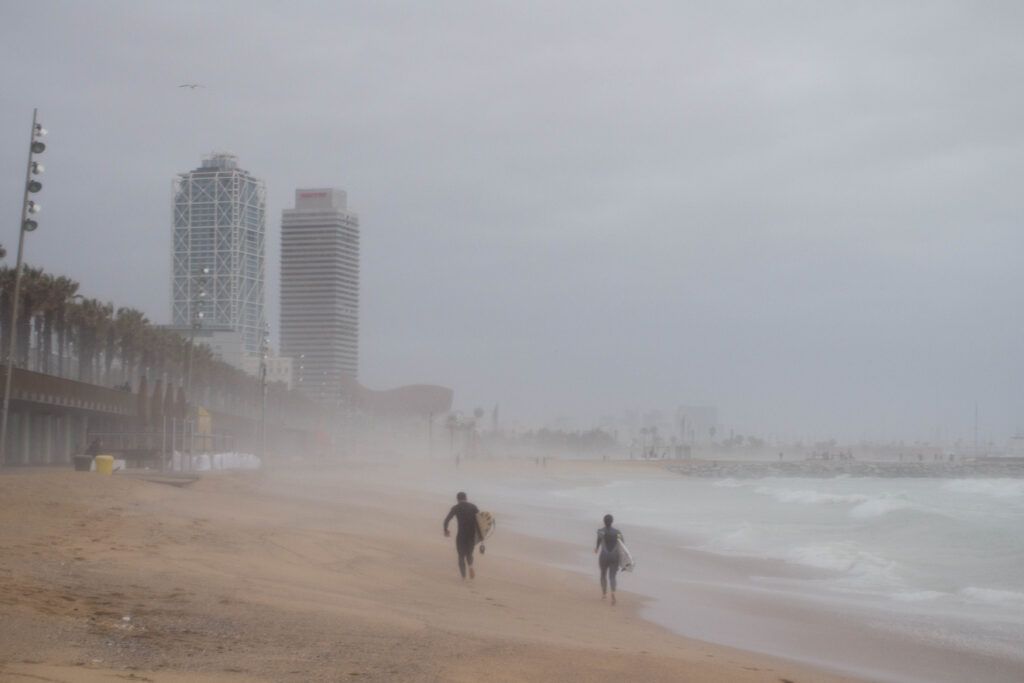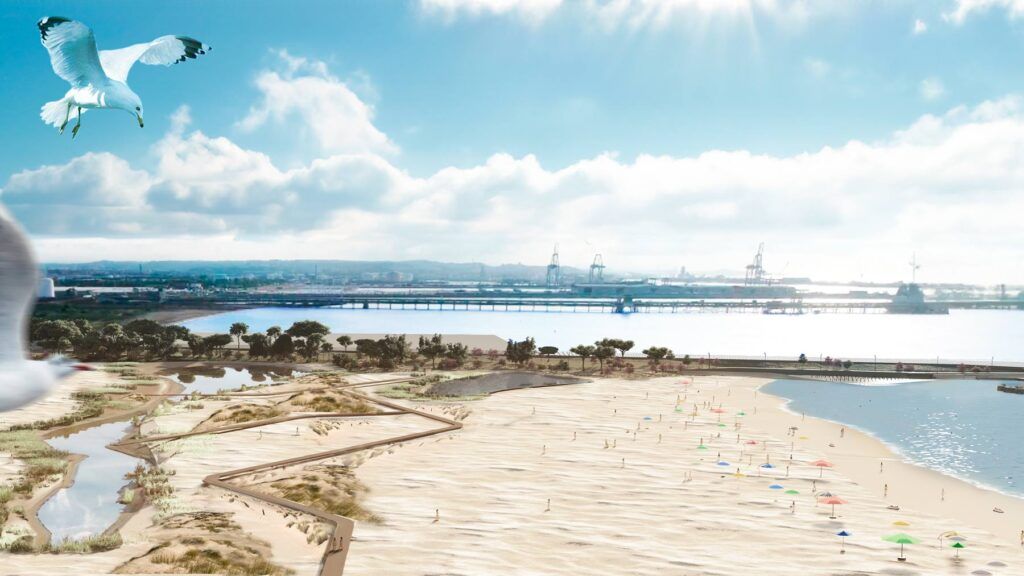
Strategies to renaturalize beaches
There is a new wave in coastal protection: renaturalizing to redefine coastal regeneration and bring life back to coastal ecosystems. And more and more ports are developing diverse strategies along these lines to help beach regeneration and resilience.

Beaches, a richness that is being lost
Sand beaches occupy more than a third of the coastline around the world, generate great socioeconomic wealth and are essential ecosystems. They are also the main barrier between the sea and the land, capable of defending us from the force of seas and oceans during storms.
However, the presence of sandy beaches cannot be taken for granted, as these ecosystems are constantly changing due to meteorological, geological and anthropogenic factors. This is the premise of research published in the scientific journal Nature Climate Change that concludes that up to 50% of the world's sandy beaches are at risk of severe erosion or complete disappearance in the next 75 years.
One of the main causes of coastal erosion is the interruption of sediment delivery by rivers or marine currents. In addition, sediment loss is increasing due to storms or human activity, causing less sediment to arrive than is being lost and breaking the equilibrium.
“The loss of sand is not a problem but a symptom, a sign that something is not working well. In some places it is a natural geological process, but in many others it is very marked by human activity,” explains Aron Marcos Fernández, councilor for urban ecology at the Calafell City Council, a pioneering town in renaturalizing its coastal strip, for which they have even demolished part of its promenade.
“Paradoxically, and contrary to what many people think, climate change is not the main cause of the loss of sand on beaches, but there are multiple factors ranging from the construction of dams on rivers, which reduce the supply of sediments that reach the beaches, to the placement of ports and breakwaters, which alter the natural dynamics of the currents,” explains Marcos.
At the same time, the construction of these elements on the coast favors the loss of ecosystems such as dunes or posidonia meadows, which have the capacity to fix and create sand reservoirs. Added to all this are the consequences of climate change, which favors the formation of increasingly intense and frequent storms. In the Mediterranean, storms and squalls with their own names, such as Gloria and Nelson, showed how the force of the sea can accelerate erosion on a coastline heavily affected by urbanization.

Naturalization: successful solutions
Lack of sediment is one of the key causes of coastal erosion, so many regeneration projects have focused on restoring this balance. According to Marcos, the option of bringing sand to beaches is costly and unsustainable, and building seawalls or breakwaters also presents numerous problems that threaten not only economic activity, but also urban elements.
“When you put in a breakwater, you are solving the problem in a specific place. There you have sand again, but it comes from somewhere else, usually from adjacent beaches. Then, you also need to put a breakwater next to it and you are chaining erosive processes until you need to put breakwaters all along the coast, which is not viable,” he explains.
In recent years, many projects have turned their backs on these solutions and have opted for renaturalization. This involves, among other things, getting sediment back down the rivers, rebuilding dunes where possible, and removing those man-made barriers that cause the most problems. All this is part of a broader set of actions that seek to restore the ecological, protective and recreational functionality of the coastal ecosystem.

Regenerating dunes with the IMPETUS project
After the storm Gloria left a trail of destruction on the Catalan coast, some local authorities began to regenerate beach dunes with the support of the European IMPETUS project. This project is based on the installation of sand traps, barriers formed by reeds that act as filters that let the wind through but not the sand, allowing the dunes to grow back in size.
Over time, vegetation helps these sediments to settle on the beach, creating dunes with more robust structures. The researchers analyze how the topography of the beach is changing with the help of drones, which has allowed them to verify that the project has had very positive results in the town of Sant Pere pescador (Girona).
“The results obtained in Sant Pere Pescador are very good, because we have seen that the sand barriers are increasing the average height of a dune by 40%. In about three years we can have an increase of three meters,” says Carla García Lozano, professor of Geography at the University of Girona and researcher of the IMPETUS project in this video published by the Europan Science Communication Institute.
Removing barriers: the Calafell proposal
The city council of this Catalan town has already begun the actions linked to its strategy of demolishing part of the promenade that, years ago, was built taking space away from the beaches. The objective is to renaturalize the coastal strip and return to the coast its natural protection tools.
“This is the solution supported by the Spanish Ministry of Ecological Transition and around which there is more consensus. Although there is also debate on the technical aspects, there is a tendency to recess and naturalize wherever possible. Where it is not possible, it is necessary to study which option is the most appropriate,” explains Aron Marcos Fernández, the local councilor for urban ecology.
Ports, key players in coastal regeneration
Like many other infrastructures located on the coast, ports promote sediment movement. That is, their presence changes the way sediments move and the places where they settle. “For this reason, most ports have clauses in their concessions that oblige them to repair this damage,” explains Aron Marcos.
- This is the case of the Port of Barcelona, which has been contributing sand to the coast for nearly two decades. In the early 2000s, the Port's own Master Plan led to the expansion of infrastructure to the south, which involved the diversion of the mouth of the Llobregat River for about two kilometers and the disappearance of a stretch of beaches.
“At that time it was considered that, to compensate for the environmental impact, the port should help to expand the natural spaces, to create an accumulation of sand on the right bank of the river mouth that would become a reserve and lung of the coast,” explains Ramon Griell Bernadó, deputy general manager of Infrastructures and Conservation at the Barcelona Port Authority.
“Since a few years after the start of the southern expansion, the Port of Barcelona has been making regular contributions of sand. The first was very large, 500,000 cubic meters, and since then they have been about 100,000 cubic meters each. To date, we have already deposited more than two million cubic meters of sand. This is what we are committed to and what we will continue to do,” says Griell.
According to the deputy general manager of Infrastructures and Conservation at the Port Authority of Barcelona, the Port's commitment is also to improve this solution and face the challenges that have been discovered thanks to the experience gained in recent years. In this sense, the Port of Barcelona is collaborating with the Directorate General of Coasts to make changes in the strategy and look for new borrow areas, to ensure that sand movements are as beneficial as possible for the ecosystems.
- We find another example in the Port Authority of Seville, which has opted to regenerate emblematic beaches such as that of Bajo de Guía in Sanlúcar de Barrameda or those of the Doñana National Park with the sediments obtained from the maintenance dredging of the Guadalquivir navigation channel. As explained by the Port of Seville, the extracted material is studied in the dredge to assess the suitability of the sands before being transferred to the coast.
The strategies are diverse, but the goal is clear: to increase coastal resilience and protect infrastructure and ecosystems.



